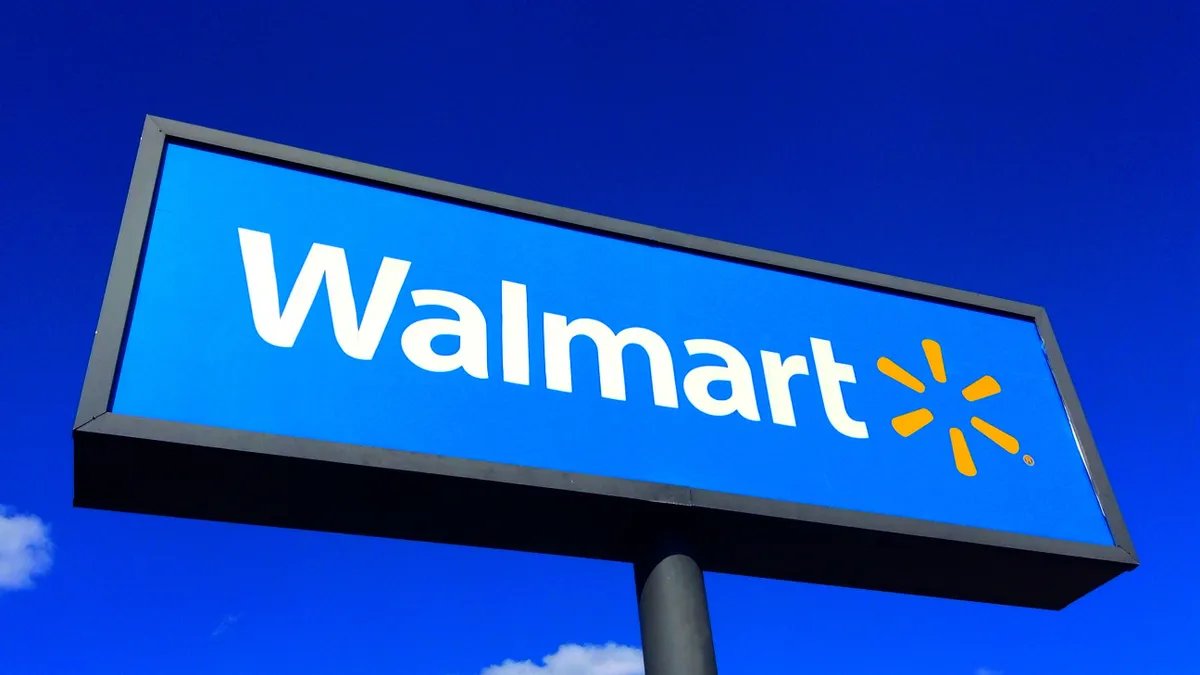Walmart has poured money into its stores, employees, technology and digital platform since mid-decade when its sales and profits sputtered as it faced challenges on multiple fronts. This year, Walmart has started to really flex its muscles, posting sales and profit gains that would be the envy of most other retailers and setting the pace for much of the industry.
"Customers are responding to the improvements we're making, the productivity loop is working, and we're gaining market share," Doug McMillon, the retailer's CEO, said in August after the company posted strong sales growth and raised its profit expectations for the year.
The sheer scale of Walmart's business is hard to truly wrap one's mind around. It has more than 11,300 stores, totaling more than 1.1 billion square feet. (Target, by comparison, has fewer than 2,000 stores.) The company last year made $514.4 billion in revenue. That's half a trillion dollars and change, about 2.4% of the entire U.S. GDP. It's nearly equal to the entire GDP of Sweden, and more than four times the GDP of Morocco.
It's also more than twice Amazon's revenue — roughly two and a half times the e-commerce giant's revenue if you exclude Amazon Web Services. If you consider that the majority of Amazon's sales come from third-party sellers, the size of Walmart's retail business even further eclipses its rival. And it's not just sales. If you toss out Amazon's cloud business, Walmart's operating income (at nearly $22 billion) is four times Amazon's.
In digital commerce, Walmart is still a bit player, though, despite its record-breaking acquisition of Jet and, with it, the hiring of co-founder Marc Lore as the company's e-commerce chief. Online, the company has admittedly been playing catch up to Amazon. And while it has posted mid-double-digit online sales growth for two years running, it moved the needle on market share just 1.3% over the past two years, according to eMarketer. (Amazon gained 5% share in that period.)
This year, Walmart has shaken up its digital strategy since bringing Lore aboard. It sold online vintage-themed retailer ModCloth, which it acquired relatively recently, in 2017. Menswear digital native Bonobos, which like ModCloth Walmart bought in 2017 to complement its Jet offer, announced layoffs. The company is also reportedly in talks around selling or spinning off its high-end concierge service JetBlack. All of these banners are reportedly losing money.
While that may sound like failure, much of it is strategic. Walmart is pulling back on Jet, refocusing on its Walmart.com platform, while blending its online game with its stores. That might be where the real opportunity lies for Walmart, which has posted strong quarterly performances so far this year. Analysts point to its investments in services like grocery delivery and buy online, pick up in-store (BOPIS) as drivers of Walmart's gains.
The retailer is, however, lost one of the principal architects of its domestic turnaround. Walmart U.S. CEO Greg Foran is preparing to leave for a New Zealand airline at the end of January. His exit represents "a clear loss" for the retailer, according to Wells Fargo analysts. Fortunately, the company has a deep executive bench. Replacing Foran is John Furner, CEO of Walmart's Sam's Club business and a 26-year veteran of the company. Analysts also note that Walmart already has a strong strategy in place that it has been executing for some time now, which means there is likely a limit to the impact of Foran leaving.
At the moment, Walmart looks like it is done trying to beat Amazon at its own game. After all, the retailer became the largest in the world by focusing on its core business and retail fundamentals. Why try to be something it's not at this point?















